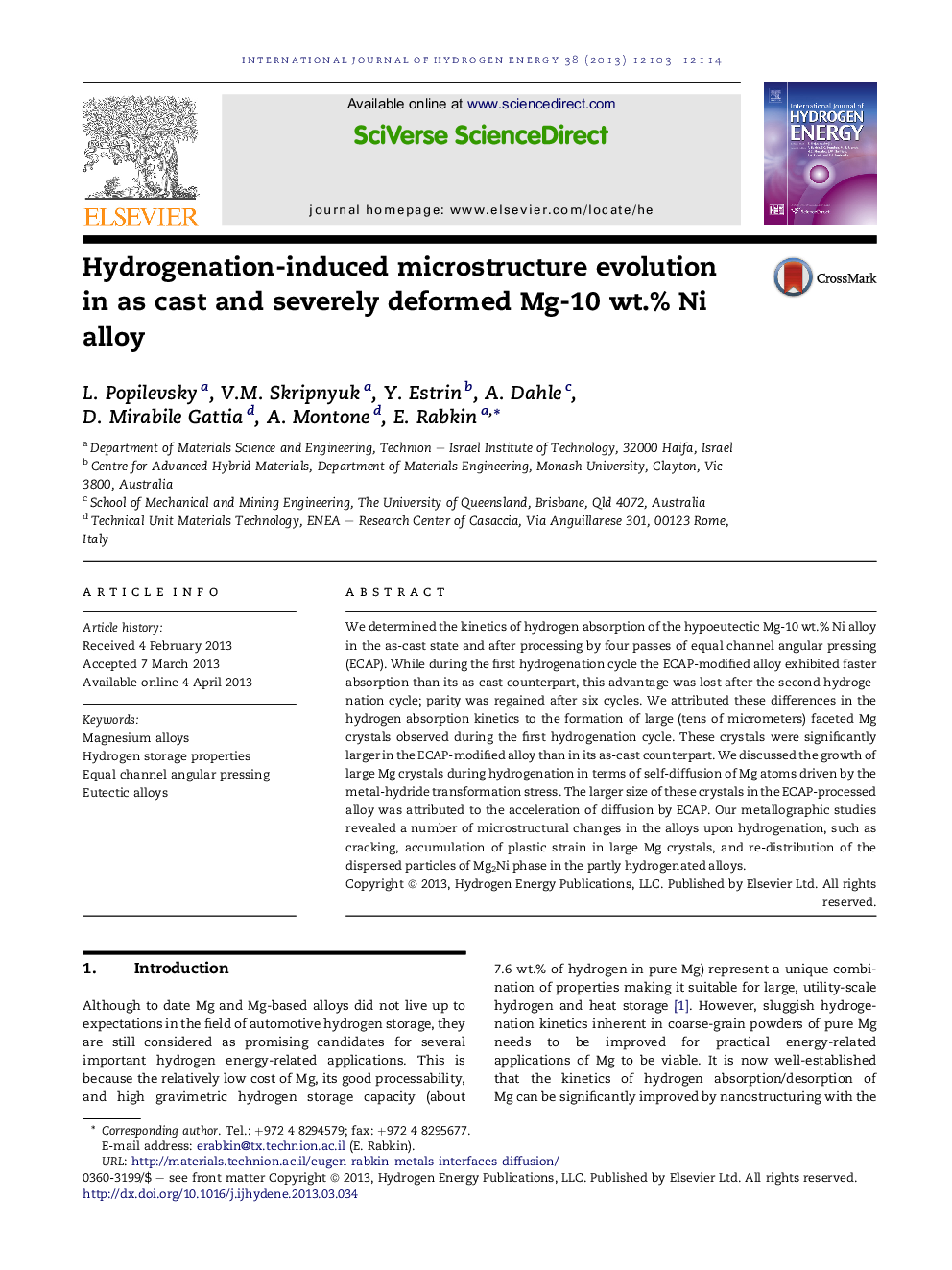| Article ID | Journal | Published Year | Pages | File Type |
|---|---|---|---|---|
| 1274931 | International Journal of Hydrogen Energy | 2013 | 12 Pages |
•Hydrogenation of Mg–Ni alloy is accompanied with the growth of large Mg crystals.•Mg crystals are bigger in the alloy processed by ECAP.•Contrary to expected behavior, ECAP retards hydrogenation of the alloy.•A model of growth of Mg crystals due to transformation stress is proposed.•Hydrogenation leads to re-distribution of Mg2Ni particles in hypoeutectic Mg–Ni.
We determined the kinetics of hydrogen absorption of the hypoeutectic Mg-10 wt.% Ni alloy in the as-cast state and after processing by four passes of equal channel angular pressing (ECAP). While during the first hydrogenation cycle the ECAP-modified alloy exhibited faster absorption than its as-cast counterpart, this advantage was lost after the second hydrogenation cycle; parity was regained after six cycles. We attributed these differences in the hydrogen absorption kinetics to the formation of large (tens of micrometers) faceted Mg crystals observed during the first hydrogenation cycle. These crystals were significantly larger in the ECAP-modified alloy than in its as-cast counterpart. We discussed the growth of large Mg crystals during hydrogenation in terms of self-diffusion of Mg atoms driven by the metal-hydride transformation stress. The larger size of these crystals in the ECAP-processed alloy was attributed to the acceleration of diffusion by ECAP. Our metallographic studies revealed a number of microstructural changes in the alloys upon hydrogenation, such as cracking, accumulation of plastic strain in large Mg crystals, and re-distribution of the dispersed particles of Mg2Ni phase in the partly hydrogenated alloys.
